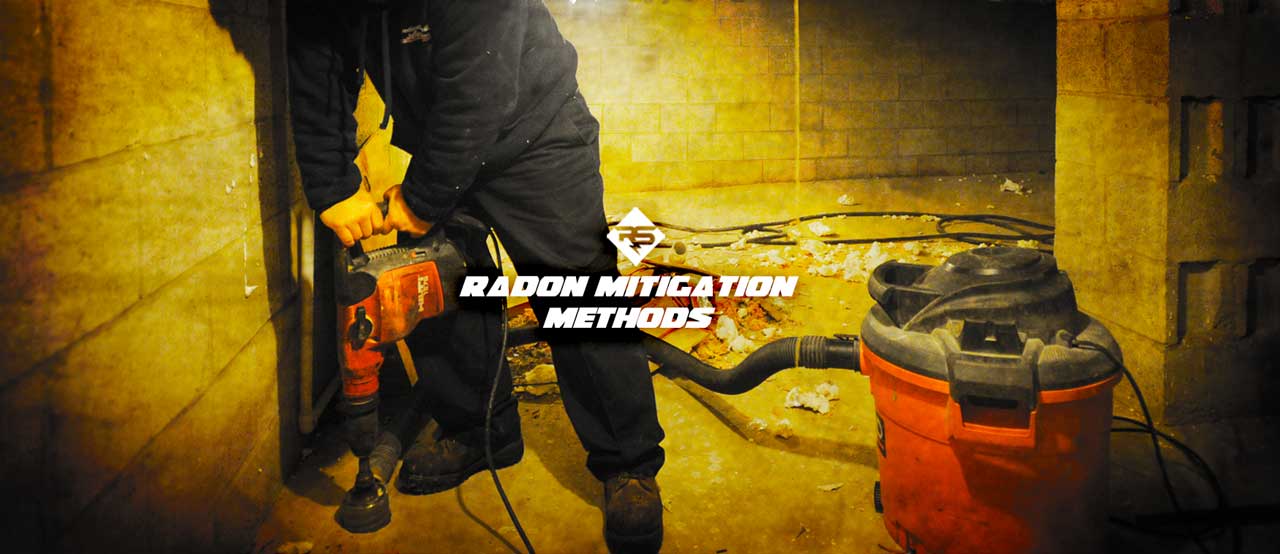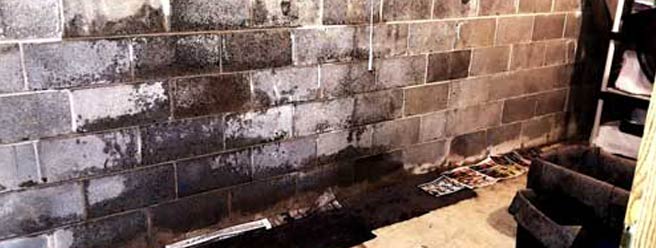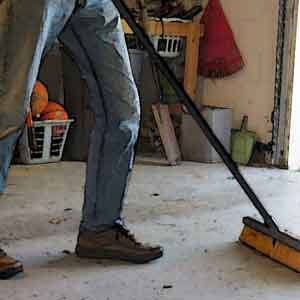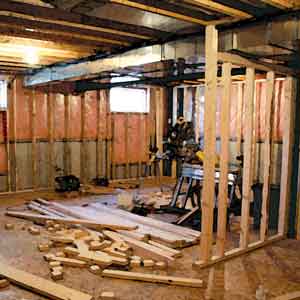How to Reduce Radon in Your Home
Radon is a naturally occurring radioactive gas that can seep into homes through cracks and pores in concrete foundations, slabs, and basement walls. According to the U.S. Environmental Protection Agency (EPA), there is no safe level of radon exposure. If your home tests at or above 4.0 pCi/L, mitigation is strongly recommended. Even levels above 2.0 pCi/L may warrant action.
There are several types of radon mitigation systems available—ranging from active sub-slab depressurization systems (with fans and vent pipes) to passive methods that involve sealing entry points in the foundation. The right approach depends on the home’s structure, radon levels, and long-term goals.
How to Choose the Best Radon Mitigation System for Your Home
When comparing radon mitigation systems, homeowners often focus on installation costs—but that’s only part of the picture. Active systems, such as sub-slab depressurization with a continuously running fan, can also increase your long-term energy costs by drawing heated or cooled air out of the basement.
To evaluate the best radon reduction method for your home, consider these five key factors:
-
Radon Reduction Effectiveness – How reliably does the system reduce radon levels below recommended thresholds?
-
Installation Cost – What is the upfront cost, including labor, materials, and permits?
-
Operational Cost – Will the system increase energy bills over time due to fan usage or air loss?
-
Noise Impact – How noticeable is the fan or airflow in living areas, especially bedrooms or basements?
-
Aesthetic Impact – Will the system require visible pipes, exterior exhaust vents, or other components that affect the appearance of your home?
Different homes and radon levels may require different approaches, from active mechanical systems to passive sealing methods. Weighing these factors can help you select the most effective and practical solution for your situation.
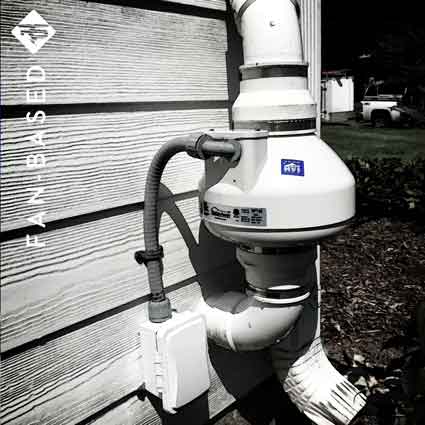
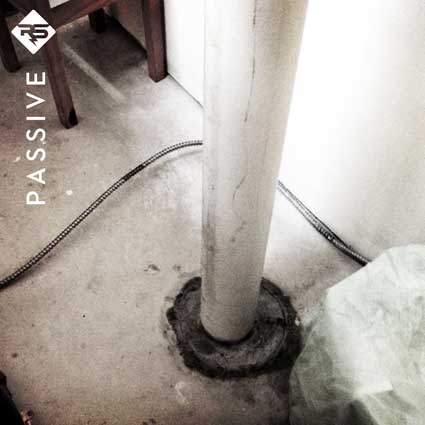
Types of Radon Mitigation and Reduction Methods
There are several approaches to reducing radon levels in homes, each with different costs, effectiveness, and energy implications. The best method often depends on your home’s structure, radon concentration, and whether you’re working with new construction or an existing foundation.
Below is a comparison of the most commonly used radon reduction systems:
For more about operating costs, view Operating Costs of ASD Radon Mitigation System.
📊 Comparison of Radon Mitigation Methods
| Method | Radon Reduction | Install Cost | Annual Operating Cost | Notes |
|---|---|---|---|---|
| Fan-Based Subslab Suction (ASD) | 50%–99% | $800–$2,500 | $225–$500 | Recommended by the EPA. Very effective when air moves freely beneath the slab. |
| Passive Subslab Suction | 30%–70% | $550–$2,250 | Moderate | Ideal for new builds. A fan can be added later to boost performance. |
| Drain Tile Suction | 50%–99% | $800–$1,700 | $50–$200 | Most effective when drain tiles form a continuous loop around the basement. |
| Sump Hole Suction | 50%–99% | $800–$2,500 | $50–$250 | Works well if the sump pit connects to perimeter drain tiles. |
| Block Wall Suction | 50%–99% | $1,500–$3,000 | $150–$400 | Only for homes with hollow block walls. Requires sealing all openings. |
| Caulking and Sealing Joints | 0%–40% | $100–$600 | $0 | Helps block radon entry through visible gaps. Best used in combination with other methods. |
| Basement Pressurization with Fan | 50%–90% | $500–$1,500 | $150–$500 | Reduces air convection but not radon diffusion. Requires an airtight basement. |
| Natural Ventilation | Variable | $200–$500 | $200–$700 | Energy-inefficient and inconsistent. Depends on climate and home layout. |
| Heat Recovery Ventilation (HRV) | 25%–75% | $1,200–$2,500 | $75–$500 | Improves ventilation efficiency. Best in well-sealed homes. |
| Sealing Concrete and Repairing Cracks | 70%–95% | $400–$700 | $0 | Used to seal porous concrete and voids. Often combined with other systems. |
Radon Mitigation in Two Basic Steps (DIY-Friendly)
Step 1: Seal the Paths of Least Resistance
Radon gas moves through the easiest openings—cracks, joints, holes, and gaps in your foundation. All radon mitigation strategies begin with this essential first step: airtight sealing.
-
Use polyurethane caulk or crack repair materials to seal:
-
Foundation wall cracks
-
Cold joints and control joints
-
Gaps around pipes or sump pits
For permanent repairs, explore our DIY crack and joint repair kits:
-
Foundation Wall Crack Repair Kits – For sealing vertical cracks in poured concrete walls
-
CrackWeld® Concrete Floor Crack Repair Kit – Ideal for hairline cracks in basement slabs
-
ElastiPoxy® Joint & Crack Filler Kit – Best for wide joints and cracks, including block walls
-
Step 2: Seal the Concrete Surface
Even uncracked concrete is porous and allows radon, moisture, and vapor to pass through. To address this:
-
Apply RadonSeal® Deep-Penetrating Concrete Sealer to your basement floors and walls, or crawlspace slabs
-
The sealer densifies and strengthens the concrete, reducing radon gas and water vapor infiltration at the molecular level
-
For slab-on-grade homes, seal the floor before installing any flooring, carpet, or leveling compounds
RadonSeal is especially effective for long-term protection when used in combination with proper crack sealing.
Advantages of Using RadonSeal Products
Radon mitigation doesn’t always require an expensive fan system. In fact, sealing your concrete and repairing crackscan help the average homeowner save up to $4,250 over ten years in installation and operating costs.
According to the EPA, most radon fan systems come with warranties no longer than five years—and once they fail, you’ll likely need to hire a radon mitigation contractor for replacement. That’s a recurring cost many homeowners would prefer to avoid.
👉 Learn how to save thousands on radon mitigation
By using RadonSeal® Deep-Penetrating Concrete Sealer in combination with our crack and joint repair kits, you can reduce radon levels affordably—without fans, ongoing energy costs, or noisy equipment running day and night. In many homes, this method alone has brought radon levels below the EPA action limit of 4.0 pCi/L.
That said, radon mitigation is not one-size-fits-all. Like waterproofing, every home is unique. Some may require more aggressive solutions, while others respond well to sealing alone.
Have questions about your specific situation? Contact a RadonSeal® Customer Service Representative for expert guidance on choosing the best radon mitigation strategy for your home.
Add RadonSeal to Fan-Based Systems
Go the Extra Mile
If you already have a mechanical radon mitigation system—or plan to install one—sealing your concrete with RadonSeal® Deep-Penetrating Concrete Sealer can take your protection even further. By blocking radon entry through porous concrete, RadonSeal helps lower radon levels beyond what fan systems can achieve alone.
It also reduces energy loss by minimizing the amount of conditioned indoor air that gets pulled through the slab and exhausted outside. Plus, unlike mechanical systems, sealed concrete has no moving parts to break—offering a passive layer of protection during power outages or fan failure.
Weather Is a Factor
If you’re relying on a passive sub-slab depressurization system, you may notice that radon levels fluctuate with weather conditions, including temperature changes and wind. Sealing the concrete helps stabilize radon levels, regardless of outdoor conditions.
More Than Just Radon Defense
Applying RadonSeal doesn’t just help with radon—it also enhances your home’s overall indoor air quality. By blocking water vapor and moisture intrusion, it helps reduce basement humidity, condensation, and musty odors caused by mold spores.
Bonus: It also strengthens and hardens concrete, protecting it from wear, dusting, and surface deterioration.
🔍 Key Benefits of Sealing Concrete with RadonSeal (Even with a Fan System)
-
Further Reduces Radon Levels – Seals porous concrete to complement your fan-based system.
-
Lowers Energy Costs – Minimizes loss of heated or cooled air drawn through the slab.
-
Passive Backup Protection – Continues working during power outages or fan malfunctions.
-
Stabilizes Radon Levels – Reduces the impact of outdoor weather fluctuations on radon infiltration.
-
Improves Indoor Air Quality – Blocks water vapor and moisture, helping prevent mold, mildew, and musty odors.
-
Strengthens Concrete – Hardens the surface to resist dusting, wear, and long-term deterioration.
-
Zero Maintenance – No filters, motors, or moving parts—just lasting protection in the concrete itself.
Finished or Painted Basements
When to Call a Radon Specialist
If your basement is fully finished, installing a fan-suction radon mitigation system is usually the most practical and effective option. For best results, search for a certified radon mitigation contractor in your area—someone experienced with finished basements and licensed to meet EPA standards.
What If the Walls Are Painted?
While fully sealing the walls may not be possible once they’re painted or finished, sealing only the floor with RadonSeal® can still help reduce radon levels. That’s because most radon enters through the basement slab, where the gas is trapped under the home between the foundation footings. In contrast, soil gas outside basement walls tends to vent upward into the atmosphere.
Covered Floors
Some homeowners have successfully mitigated radon by temporarily lifting carpeting or linoleum and applying a sealer to the exposed slab. However, if the floor is already painted, tiled, or covered in adhesive, removal can be tedious and may not yield full coverage. In such cases, it’s often more efficient to consult a specialist.
Basement Bathrooms
In finished basements, gravel-filled openings around plumbing—especially under bathtubs—are often major radon entry points. These openings can bypass the slab and allow radon to flow freely into the home. If this applies to your basement, it’s best to contact a mitigation professional for a long-term solution.
Bonus Benefit: Improved Indoor Air Quality
Even in finished spaces, applying RadonSeal to accessible floor areas can help:
-
Block water vapor and humidity, reducing condensation and improving comfort.
-
Alleviate musty odors caused by mold and mildew.
-
Strengthen the slab surface, reducing dust and long-term wear.
How Radon Mitigation Systems Affect Basement Design and Home Value
According to the EPA Consumer’s Guide to Radon Reduction:
“Minimize the effect of installing a radon reduction system in your house by assuring that it blends with its surroundings. For instance: radon vent pipes may be encased with materials that match the exterior of your house, or the pipes may be routed indoors up through closets. Suction systems require that one or more holes be drilled through the basement floor, preferably in a central location. The piping will likely constrain your ideas on finishing the basement.”
Protect the Market Value of Your Home
While mechanical radon mitigation systems can be effective, they are often seen as unsightly additions by potential homebuyers. Exposed PVC piping and loud fans may raise concerns—especially among buyers unfamiliar with radon. Real estate agents often agree that fan-based systems can reduce perceived home value or delay closing.
RadonSeal’s Approach Preserves Appearance and Space
RadonSeal Concrete Sealer and Crack Repair Kits offer a more discreet radon reduction approach that avoids the clutter of piping, drilling, and fan noise. By sealing concrete and repairing cracks, homeowners can significantly reduce radon entry without sacrificing interior design or usable space—especially important for finished or partially finished basements.
Backdrafting Risks with Fan-Based Radon Mitigation Systems
Radon mitigation fans don’t just pull soil gases from beneath your home—they can also draw heated or conditioned indoor air through the slab, especially in newer, energy-efficient homes. This creates a risk of backdrafting—a dangerous situation where combustion gases from your furnace, water heater, or fireplace get pulled back into your home instead of venting outside.
⚠️ Carbon monoxide is an immediate risk—while radon takes years to cause harm, CO poisoning can be fatal in minutes. Every home with a fan-based mitigation system should have a working CO alarm.
Why Backdrafting Happens
Modern homes are built tighter to improve energy efficiency, which limits natural airflow. They’re already slightly depressurized due to the stack effect (warm air rising and escaping through the upper levels). Add in exhaust fans, kitchen range hoods (which can move up to 750 CFM), and clothes dryers, and the home loses even more internal pressure.
Now, factor in a radon fan pulling 100 CFM from below the slab. In a leaky home, this might reduce indoor pressure by only 1 Pascal (Pa). But in a tightly sealed house, that drop could reach 5–10 Pa—enough to reverse chimney flows and pull combustion gases indoors.
What the Building Code Recommends
Modern building codes require that each combustion appliance have its own make-up air supply, but many rely on passive air inlets. These are wind-dependent and may unintentionally draw indoor air out instead of allowing outdoor air in. A more dependable solution is to install sealed, direct-vent appliances that won’t backdraft under negative pressure.
Avoid Re-Entrainment of Radon Gas
When radon gas is vented through a mitigation system, it doesn’t always stay gone. Because radon is heavier than air, it can sink after being discharged—potentially re-entering your home through doors, windows, or cracks, especially under the influence of the stack effect (the natural upward airflow in homes that creates indoor suction).
According to the EPA’s radon mitigation guidelines:
“When radon is vented from the radon mitigation system it tends to sink and there is a danger of radon re-entering the building through doors and windows due to the vacuum (‘stack’) effect. To prevent re-entrainment of radon, the point of discharge from vents of fan-powered soil suction and block wall suction systems must meet all of the following requirements:
Be above the eave of the roof
Be ten feet or more above ground level
Be ten feet or more from any window, door, or other opening
Be ten feet or more from any opening into an adjacent building
The exhaust point should be positioned above the highest eave of the building and as close to the roof ridge line as possible.”
While these venting requirements help reduce re-entrainment, they do not eliminate the risk—especially in tight urban settings or during calm weather.
RadonSeal Offers a Safer, Passive Solution
By sealing the concrete itself and blocking radon entry at its source, RadonSeal Concrete Sealer prevents the radioactive gas from entering your home in the first place. There’s no need to vent radon into the air around your home or worry about compliance with venting distances. RadonSeal avoids creating a lingering “cloud” of radioactive particles outside your house—keeping radon safely underground where it belongs.
Why Common Radon Remediation Ideas Fall Short
Many homeowners and builders mistakenly believe that surface coatings or physical barriers can block radon gas—but unfortunately, these methods do not work. Radon is a radioactive gas with extremely small atoms that can easily penetrate materials most people assume are airtight.
Paints, Epoxies, and Surface Sealers Don’t Stop Radon
Some assume that applying rubber-based, epoxy, or standard concrete paints will stop radon. However, even thick coatings are ineffective. According to studies conducted by the U.S. EPA, surface sealers and paints were found ineffective at reducing radon levels. Not only do these coatings fail to stop radon diffusion, but they are also prone to damage. Moisture and alkalis within the concrete eventually cause blistering, cracking, and peeling—further reducing their integrity.
Building Materials Like Drywall or Flooring Are Not Barriers
Covering basement floors or walls with:
-
Sheetrock
-
Plaster
-
Wallpaper
-
Linoleum
-
Carpet
-
Polyethylene sheeting
…does not block radon. These materials may improve aesthetics or comfort, but they have no measurable impact on radon infiltration. Even several inches of solid concrete cannot fully stop radon unless properly sealed.
The Myth of Vapor Barriers
Some builders believe that the plastic vapor barrier installed under a slab during construction will stop radon gas. While this layer can slow down soil gas movement, it does not completely prevent radon diffusion – especially when torn or deteriorated. That’s why the EPA refers to it as a “soil gas retardant,” not a radon barrier. Over time, radon can accumulate beneath the slab and still seep through unsealed concrete.
